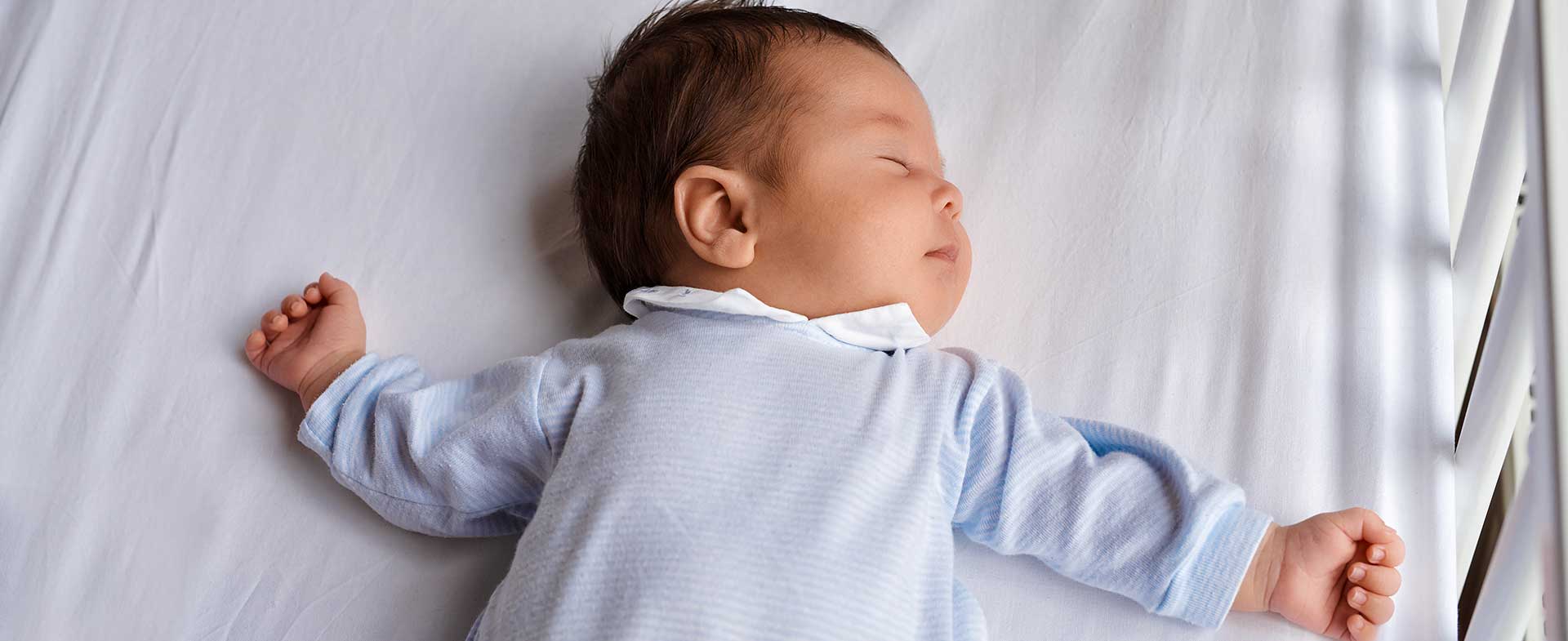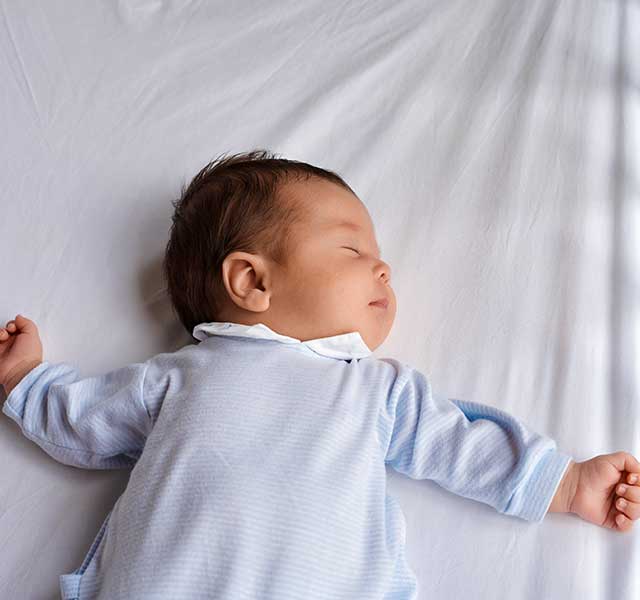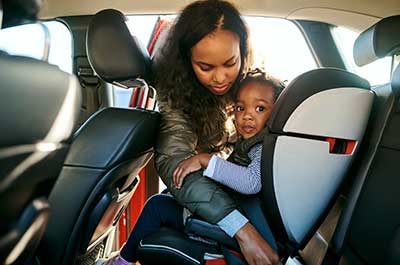Sleep safety is so important. After all, babies and toddlers spend a lot of time sleeping—which is crucial for their development—and you want to ensure they’re sleeping safely and soundly. But knowing how they should be sleeping (and what they should be sleeping in, when) can get confusing. Add to that the variety of products and opinions on social media, and it can leave a first-time parent’s head spinning.
Here, Daniel Gisslen, M.D., a pediatrician at Henry Ford Health, offers guidance on when to transition from a bassinet to crib and bed—and how to ensure safe sleeping along the way.
1. Bassinet: When you bring your baby home from the hospital, they’ll initially sleep in a bassinet. “The mobility of a bassinet is convenient,” says Dr. Gisslen. “You can put the bassinet in your bedroom so you have easy access to them for night feedings. These little ones can wake up a few times a night. Sometimes they’ll put themselves back to sleep while other times they’ll realize they’re hungry.”
Make sure the bassinet is placed on a sturdy, flat surface. If it has adjustable legs, ensure they’re locked and secure.
2. Crib: When your baby exceeds the height and weight requirements of the bassinet, transfer them to the crib. This might be when they’re between three and six months old. Before your baby is exclusively sleeping in a crib, however, they can take naps there to ease the transition.
Both in the bassinet and crib, your baby should sleep on their back on a firm mattress with just a fitted sheet. The American Academy of Pediatrics recommends they sleep without pillows, blankets and stuffed animals until they’re at least 12 months old, as these items can increase the risk of suffocation and SIDS (sudden infant death syndrome). Dr. Gisslen says it’s not a bad idea to wait even longer than that, until they’re around two years old.

Need A Pediatrician?
In lieu of blankets, you can have your baby wear a sleep sack, which gives them the coziness of a blanket without the risk of suffocation. Choose breathable, lightweight sleep sacks for summer and warm, fleece sleep sacks for winter.
3. Toddler bed/twin bed: When to transition your child to a bed can depend upon a few factors:
- They’re pulling themselves up to climb out of the crib. This often occurs between 18 months and three years old. That said, most cribs are adjustable and you can buy yourself a bit of time by lowering the mattress and raising the guardrails so they can’t get out. “Ensure furniture and large toys are not near the crib,” says Dr. Gisslen. “That way, if they do climb out, they won’t accidentally hurt themselves. Secure their dresser drawers in a way so they can’t pull them out and use them as steps.”
- They’re 35 inches tall. Even if they’re not climbing out of the crib, at 35 inches they’re tall enough that they could—even with the mattress set to the lowest setting.
- They are developmentally ready. This means your child understands they should lay in bed for the night—and that you think they’re ready to make the transition.
Just as with transitioning from the bassinet to the crib, your child can start taking naps in their bed ahead of time. You can also let them pick out their comforter and sheets to get them excited about this milestone.
Dr. Gisslen says a toddler or a twin bed will work—the only difference is size. You can find both twin and toddler beds with safety guard rails; some are detachable. If you choose a bed without guard rails, you can buy guard rails to attach to the bed. Some children’s beds are also convertible and designed to grow with your child.
Why You Shouldn’t Bed Share
No matter what you do, the American Academy of Pediatrics strongly discourages bed sharing with your baby or toddler, as it increases the risk of suffocation and death.
“Sleeping in the same bed with your baby is very dangerous,” says Dr. Gisslen. “All it takes is one momentary lapse and you could roll over onto your baby and not realize it—and wake up with a tragedy. Or the baby could roll off the bed, getting wedged between the bed and wall. Adult mattresses are not designed for babies. They are too cushioned and can lead to suffocation. Bed sharing is risky and just not worth it.”
What About Co-Sleeping?
The American Academy of Pediatrics does recommend co-sleeping—or room sharing—for at least six months and up to 12 months, as research has shown that sleeping in the same room as your baby can reduce the risk of SIDS.
That said, babies who sleep in their own room earlier than that (around 4 months) may be better independent sleepers—and it likely allows for parents to get a better night’s rest, too.
“If your child sleeps in the same room with you for a while, it might be harder for them to fall asleep knowing you’re right there,” says Dr. Gisslen. “They’ll want your attention. Being in their own room can teach them how to put themselves to sleep without assistance.”
With many child-rearing decisions, it’s important to know the benefits and drawbacks of each and make an educated choice that works best for your family. “Talk to your pediatrician,” says Dr. Gisslen. “When it comes to parenting, there are so many decisions to make and oftentimes, what you choose to do is up to your comfort level and what is best for your child.”
Reviewed by Daniel Gisslen, M.D., a pediatrician who sees patients at Henry Ford Medical Center – Bloomfield Township.



